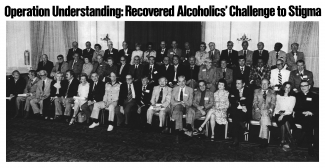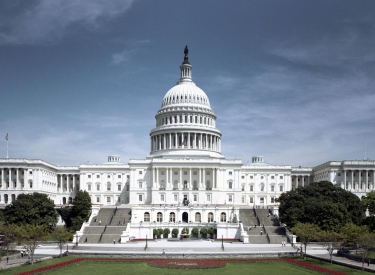
The History of Addiction
Countless people have had their lives positively transformed by addiction treatment. But tragically, this is not the norm.
Despite decades of advancements in science, pharmacology, and technology, the continuum of evidence-based addiction treatment services remains largely unavailable to those in need. The addiction treatment system is hindered by fragmentation, outdated treatment philosophies, and a payment system that perpetuates antiquated care models and discourages the adoption of best practices in the field. The historical rise and development of the current addiction treatment system explains the evolution of a broken system, and sheds light on new solutions.
Today, drug policy leaders, frontline addiction professionals, and affected individuals and families are calling for radical changes in the design and delivery of addiction treatment. It's time for change. It's time to protect our families.
The early days of American addiction treatment
Treatment and recovery support for addiction began in the mid-1800s, with the nation’s first temperance and alcoholism recovery mutual aid movements, which subsequently grew into specialized care. In the mid-to-late nineteenth century, addiction treatment was provided by inebriate homes, inebriate asylums, and private addiction cure institutes; faith-based urban rescue missions and rural inebriate colonies; and by aggressively promoted and often fraudulent "home cures."
The early era of addiction treatment in the U.S was riddled with ideological divisions, ineffective and harmful treatment methods, and exposés of fraud. Not surprisingly, this era of unsubstantiated interventions ended with lost cultural faith in the potential for permanent recovery from addiction.
As specialized care collapsed in the early twentieth century, America embarked on a bold social experiment: Let those currently suffering with addiction die off by benign neglect, and prevent future addiction by legally prohibiting the sale of beverage alcohol and by criminalizing the non-medical distribution and possession of opiates, cocaine, and a succession of other intoxicants. During this time, people addicted to alcohol and other drugs were relegated to the “drunk tanks” of local jails, inebriate penal colonies, the “foul” wards of large city hospitals, the “chronic” wards of psychiatric asylums, and, for the rich and famous, exclusive “drying out” sanitaria.
In the mid-twentieth century, sporadic efforts to rebirth specialized addiction treatment accelerated. Alcoholics Anonymous (AA, 1935) and the advent of AA-influenced models of treatment (1940s) elevated cultural optimism about recovery, and rising rates of juvenile narcotic addiction in the 1950s spurred new experiments in addiction treatment and recovery support. This resulted in increased availability of replicable treatment models (e.g., outpatient clinics and inpatient/residential alcoholism treatment programs, therapeutic communities, methadone maintenance clinics).
Driven by the emergence of new treatment methods, decades of medical and legal advocacy, rising alarm about heroin use among American soldiers in Vietnam and youth at home, the U.S. reached a cultural tipping point in the early 1970s.
The outcome was landmark legislation (Comprehensive Alcoholism Prevention and Treatment Act of 1970 and the Drug Abuse Treatment Act of 1972), providing federal, state, and local funding for prevention and treatment and expanding insurance coverage for addiction treatment, plus a sustained campaign of public education led by people in recovery from alcoholism.
This stimulated rapid growth of addiction treatment from a fledgling therapeutic movement to a multi-billion (currently more than $35 billion) dollar industry. However, this growth was not tied to improvements in quality: The performance of addiction treatment programs was benchmarked by financial metrics such as occupancy rate and budget, rather than measurements of patient outcomes and wellness.
The War on Drugs and the opioid epidemic
The 1980s and 90s added additional challenges to treatment quality and barriers to access. An intensified “War on Drugs” further criminalized addiction as a moral failing rather than a medical disease. This resulted in increased penalties for drug-related crimes, diversion of addicted individuals from treatment interventions to jails and prisons, and heightened addiction-related stigma. More restrictive insurance coverage for addiction treatment and an aggressive system of managed care led to the closure of many hospital-based addiction treatment units and private residential treatment programs, as well as progressively shorter durations of addiction treatment.
Since 2000, the opioid epidemic has again shifted the treatment landscape. Legislative and regulatory responses now require insurance coverage of addiction treatment at par with other medical conditions (through the Mental Health Parity and Addiction Equity Act and Affordable Care Act), and have expanded treatment, education, and prevention (through the Comprehensive Addiction Recovery Act and Twenty-First Century Cures Act). However, there has been slow progress to integrate addiction treatment with mainstream healthcare and mandate modern best practices. Instead, addiction treatment is still largely delivered with diverse philosophies and methods stemming from its beginnings as a “folk healing art.”
The deadly toll of outdated treatment methods
The continued use of outdated treatment methods is harmful to patient health, and, in some cases, it’s even criminal. The treatment system fails to reach people until the latest stages of addiction, and is ill-equipped to provide care for people with low to moderate problem severity. Insurance denials, prior authorization requirements, and admission waiting lists create impossible hurdles. The system is plagued by high early dropout rates (40-60%), high rates of non-completion (more than 50%), and low rates (less than 50%) of successful linkage to long-term recovery support resources.
Families affected by addiction report that they can’t find or judge the quality of treatment services. Gary’s son, Brian, for example, cycled through seven different programs without accessing treatment based on research or attuned to his needs.
The only path forward: A radical transformation
The Surgeon General’s Report on Alcohol, Drugs and Health illuminates how to systemically course-correct the addiction treatment system and improve the quality of care. Shatterproof’s Substance Use Disorder Treatment Task Force, a multi-stakeholder group including leaders in addiction research, treatment, and health policy and payment, is dedicated to making this happen. Drawing upon core concepts from the Report, the Task Force established the National Principles of Care for Substance Use Disorder Treatment, eight core tenants of quality addiction treatment, to guide their work.
Ensuring the addiction treatment system aligns with these principles will take shifts in infrastructure, payment incentives, and treatment philosophies. Shatterproof and the Treatment Task Force are working to create a rating system for addiction treatment programs that will drive these critical changes by bringing new transparency to the quality of care offered at addiction treatment programs. Measuring each program’s use of evidence-based best practices, and making this information available to the public, will allow those seeking treatment to make informed decisions and market forces to incentivize providers to deliver high-quality, evidence-based care.
These steps will not be easy, but they are essential to transforming addiction treatment into a highly-regarded medical specialty, and to ensuring that every American has access to evidence-based medical care.
Gary Mendell is Shatterproof's founder and CEO. Sam Arsenault is Shatterproof's Director of National Treatment Quality Initiatives. William White is Emeritus Senior Research Consultant at Chestnut Health Systems and author of "Slaying the Dragon: The History of Addiction Treatment and Recovery in America."
Photos courtesy of the Illinois Addiction Studies Archives.
Originally published in 2018.






